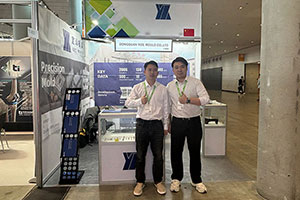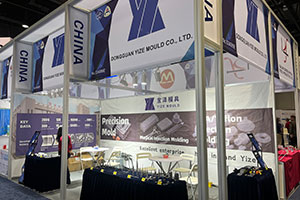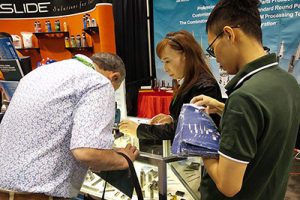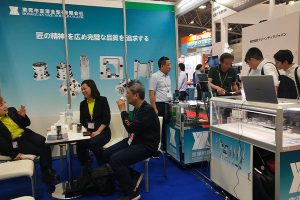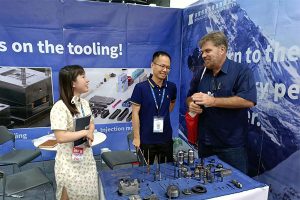Solving the Galling Problem of Tungsten Carbide Drawing Dies
In the grand arena of industrial production, tungsten carbide drawing dies play a role akin to a skilled behind-the-scenes hero, especially in the field of metal forming and processing. They […]
In the grand arena of industrial production, tungsten carbide drawing dies play a role akin to a skilled behind-the-scenes hero, especially in the field of metal forming and processing. They rely on their outstanding performance to assist in the precise forming of various metal products, laying a solid foundation for the birth of numerous industrial items. However, like any hero facing challenges, these dies encounter a tricky issue during long-term use – die galling. This problem not only acts as a “stumbling block,” seriously affecting product quality and production efficiency, but also functions as a “bottomless pit,” continuously increasing production costs and negatively impacting a company’s economic benefits. This article will delve into the root causes of die galling and present a set of effective solutions.
The Culprits Behind Die Galling
Die galling, in simple terms, refers to the damage caused by friction, adhesion, or tearing between the die surface and the metal material during the drawing process. Several “culprits” lie behind this phenomenon:
Bisnis pabrik kami: suku cadang karbida, suku cadang cetakan, cetakan injeksi medis, cetakan injeksi presisi, cetakan injeksi PFA teflon, alat kelengkapan tabung PFA. email: [email protected],whatsapp:+8613302615729.
Insufficient Lubrication: The Spark of Friction
During the dynamic drawing process, sufficient lubrication is required between the die and the material to reduce friction. Once lubrication is inadequate, friction will increase sharply, similar to dry-running gears biting into each other, making die galling highly likely.
Unreasonable Die Design: Structural Hidden Dangers
The design of the die structure is like a building blueprint. If it is unreasonable, it will create many hidden dangers. For example, a too-small drawing angle will subject the material to excessive extrusion during the drawing process, increasing friction with the die. An insufficient surface roughness of the die is like an uneven road, facilitating adhesion and tearing between the material and the die, thus leading to galling.
Improper Material Selection: The Trap of Affinity
The selection of metal materials is of utmost importance. If the metal material used is too hard, it is like using a hard stone to rub against the die, inevitably causing damage. If the material has a strong affinity with the die material, they tend to bond closely, which can also easily result in galling during the drawing process.
Unreasonable Process Parameter Settings: Imbalanced Operations
Unreasonable settings of process parameters such as an excessively fast drawing speed, or an excessively high or low temperature during the drawing process are like failing to control the heat and timing well in cooking, affecting the outcome. These imbalances can cause an abnormal interaction between the die and the material, leading to die galling.
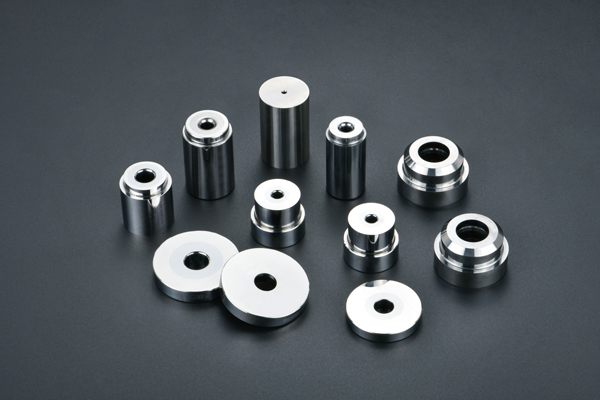
Solutions to Die Galling
To address the issue of die galling, we can take a series of effective measures from multiple aspects:
Improving Lubrication Conditions: Dressing the Die in a “Lubrication Armor”
Selecting the appropriate lubricant is crucial. Different types of metal materials and drawing processes require lubricants with different properties. Just as we need clothes of different thicknesses for different seasons, we must carefully choose based on actual conditions to ensure sufficient lubrication between the die and the material during the drawing process. At the same time, regular lubrication treatment of the die, like regular maintenance of a machine, can maintain the lubricated state of the die surface and reduce friction and damage.
Optimizing Die Design: Creating a Reasonable “Structural Code”
Rational die structure design is a key step in preventing galling. Increasing the drawing angle is like widening the road, reducing friction between the material and the die. Improving the surface finish and reducing the surface roughness of the die are like polishing the die surface, minimizing the possibility of adhesion and tearing and making the die more “smooth and durable.”
Selecting Appropriate Materials: Matching the Best “Process Partner”
According to specific process requirements, selecting metal materials with moderate hardness and low affinity with the die material is like finding a suitable “partner” for the die. When necessary, pre-treating the material, such as through annealing or softening, is like “training” the material to reduce its hardness and minimize damage to the die.
Adjusting Process Parameters: Mastering the Precise “Rhythm of Operations”
Based on the actual situation, reasonably adjust the drawing speed to avoid galling caused by it being too fast or too slow. It is like controlling the speed of a car – going too fast can lead to loss of control, while going too slow reduces efficiency. At the same time, control the temperature during the drawing process within an appropriate range, like controlling the heat in cooking, enabling the die and material to undergo the drawing process under optimal temperature conditions.
Die Maintenance and Upkeep: Nurturing the “Health Secrets” of the Die
Regularly cleaning and inspecting the die, like conducting a “physical examination” for the die, can promptly detect and address potential damage, preventing problems from worsening. Regular heat treatment and surface strengthening treatment of the die are like “strengthening the body” of the die, improving its wear resistance and galling resistance and extending its service life.
Adopting Advanced Technologies: Injecting Technological “Innovative Power”
Introducing advanced die manufacturing technologies and surface treatment technologies, such as laser cladding and plasma spraying, is like equipping the die with a “high-tech weapon,” significantly enhancing its performance and service life. Applying numerical simulation technology to simulate and analyze the drawing process is like conducting experiments in a virtual world, optimizing process parameters and die design, and identifying and solving problems in advance.
Standardizing Operations and Training: Cultivating Professional “Operation Experts”
Formulating strict operating procedures ensures that operators follow the correct steps during the drawing process, like providing them with a detailed “operation guide.” Regularly training operators in skills improves their operational proficiency and ability to handle unexpected situations, like “charging” the operators, enabling them to operate the die more skillfully and accurately and reducing galling caused by improper operations.
Looking Ahead: The “Upgrade Path” for Die Performance
Die galling is one of the common problems encountered during the use of tungsten carbide drawing dies, with complex and diverse causes. However, by taking comprehensive measures such as improving lubrication conditions, optimizing die design, selecting appropriate materials, adjusting process parameters, and strengthening die maintenance and upkeep, we can effectively solve the die galling problem, providing a solid guarantee for the stable operation of tungsten carbide drawing dies and the improvement of product quality. With the continuous progress of science and technology and the rapid development of industry, more advanced technologies and methods will be applied to die design and manufacturing in the future, opening new doors for enhancing die performance. At the same time, strengthening the skill training of operators will also become an important link in preventing die galling. Let us work together, comprehensively apply these solutions, and jointly promote the tungsten carbide drawing die industry to a more brilliant future.


